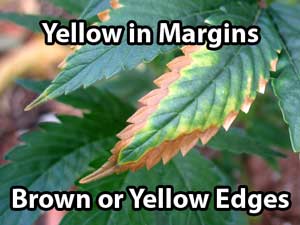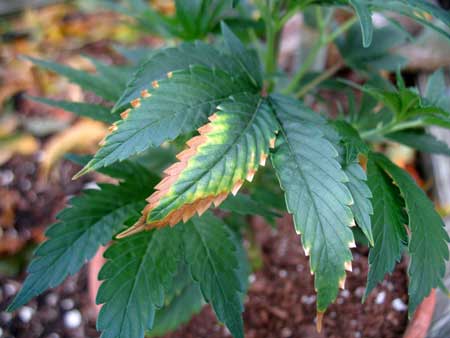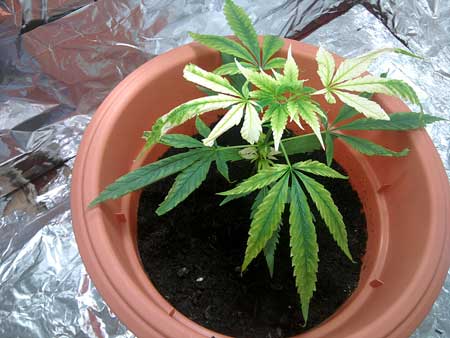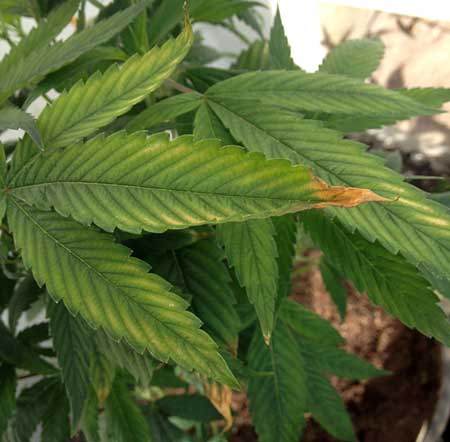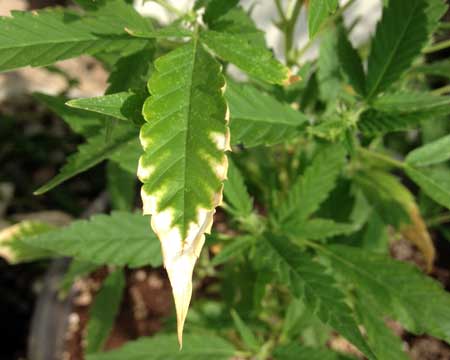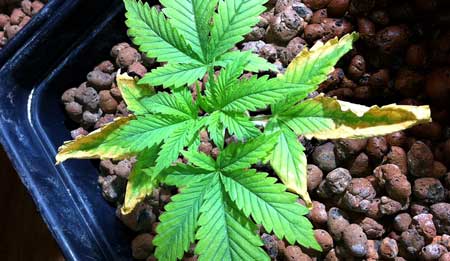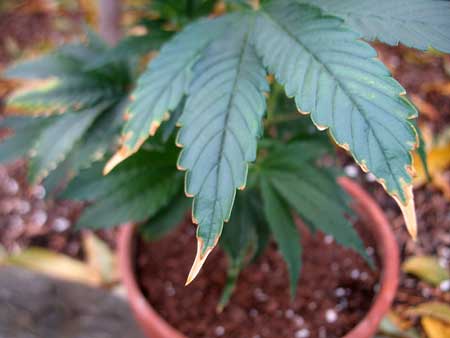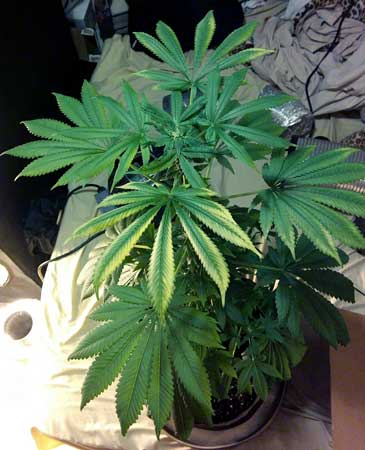Potassium, (k+) a cation, is a major nutrient contributing to various metabolic process as well as growth and morphology. Potassium’s also finds itself as a critical component in both defense and responses to abiotic and biotic stress or pest.
The nature of Potassium’s role in aid of plant stress and growth is centered around its ability to affect nutrient uptake, stomata dilation and cell membrane/Rhizome osmosis.
Some of the correlating factors tend to be binary for example optimal concentrations of K in a plant tissue aid in synthesis of proteins, starches and which inherently decrease amnio’s, organic acids and sugars all things needed for bacteria and virus to grow. Potassium is also found in very high concentration in most plant tissue. Meaning its needed in high amount’s and is not described as having a toxicity.
Most often issues with Potassium are deficiencies, Potassium toxicity in cannabis is more or less an issue of antagonism or inhibition of other nutrients.
Signs of Potassium deficiencies usually start in older leaves. With the edges of your leaves becoming yellow and brown and or appear burned eventually also causing leaf margins to turn yellow then brown and die.
You may see the brown burnt edges first, or you may see the yellowing first. When the leaf symptoms are both present, it’s a good sign you have a potassium deficiency in your leaves.
Plants experiencing a Potassium deficiency may have weak stems or might stretch unnecessarily. Because of the way deficiencies affect the plant one deficiency can mimic another.
For example, an early potassium deficiencies looks like an iron deficiencies and because of antagonistic from other nutrients an abundance of one nutrient inviably can cause a deficiencies of another. This happens when one nutrient induces a deficiency in a plant, to much available nitrogen can contribute to a Potassium deficiencies
The burnt yellow leaf edges and margins with wrinkled damage seen in the photo above, is a clear sign of a Potassium deficiencies. Because of Potassium relationship with cell walls rigidity and Silica uptake deformities like this can often accompany a cannabis plant that’s potassium deficient.
Sometimes you’ll get something that looks a lot like tip burn with a potassium deficiency. Look close and you see not just the burnt tips but yellow margins of the leaves, the 2 signs together suggest a Potassium deficiencies.
Sometimes the burn can appear pale, bleached or yellow, instead of brown. If you look in the background of this pic, you can see some of the leaves have turned brown in addition to the bright yellow leaf in the front. These are all signs of a marijuana potassium deficiency.
The clues left by this plant here, bleaching, slight cupping may not initially seem like Potassium deficiencies but if you notive the other damage in the background. Burnt dead tips with dead yellowing margins. These are all signs of a rather severe Pottasium deficiency.
When diagnosing a deficiency its important to get as much data as possible to rule out other sources of damage. Is the damage Biotic or abiotic. Could the damage be from heat, stress light burns?
Down below we see a relatively healthy plant that should have enough available Potassium but if the media is too acidic and Nitrogen is readily available it won’t uptake as easily. Creating a deficiency even though you have been providing enough.
Also, plants that are in early to mid-flower or young require lots of Potassium in those stages of life and might require more. Potassium toxicity is for the most part non-existent although it does have an antagonistic relationship with Calcium and Magnesium.
Could it actually be light burn?
Is it actually light burn?
Solution for Potassium Deficiency in Cannabis
A possible Potassium deficiency might have a number of sources, stress, media imbalance, nutrient binding, nutrient antagonism. If you are just noticing the start of a deficiency be mindful to look for damage migration. A singular leaf or couple of leaves is fine but if you see damage both moving from leaf to leaf and getting worse (more yellowing, dead parts of leaves extending down the leaf and to its center) it’s definitely time for some corrections
1.) Make Sure It’s Not Light Burn
When a cannabis plant is kept too close to the grow lights, it can get light burn which looks almost exactly like a potassium deficiency. When determining how far away you need to set you’re there are rules of thumb for HPS and MH/CMH of about 12inches or 30cm away from your plants, Figuring out your PPFD and PPF for your traditional grow lights or LED’s is a much better estimate, that takes into account measurable light intensity per sq. foot versus guessing to avoid plant damage. If you have no access to a meter a good rule of thumb is 8-18 inches with LEDs and 12-24 inches with HPS/CMH/MH
2.) Use Good Sources of Nutrients
Most cannabis growers don’t need to add more nutrients if their leaves are experiencing a nutrient deficiency. In fact, most growers have actually already given plenty of potassium to their cannabis plants, whether they meant to or not. If you’re using quality soil or cannabis-friendly nutrients, you probably don’t need to worry about adding more potassium.
Potassium deficiencies are generally more likely to appear when a grower is using heavily filtered or reverse osmosis (RO) water to feed plants, but as long as you’re giving your plants a good source of nutrients, you probably need to…
3.) Adjust pH to Correct Range
But the reason most growers see potassium deficiencies is because potassium is best absorbed at lower pH ranges. When the pH gets too high, your plant may exhibit signs of a potassium deficiency even if it’s physically there near the roots
Media pH Management
In soil, potassium is best absorbed by the roots in the 6.0 – 7.0 pH range
In hydro or coco coir, potassium is best absorbed by the roots in the 5.5 – 6.5 pH range
4.) Watch Leaves for Recovery
If you suspect your growing cannabis plant has a potassium deficiency, flush your system with clean, pH’d water that contains a regular dose of cannabis-friendly nutrients. Old damaged growth will likely not recover. Watch plant over next few days to make sure that the problem stops spreading to new growth.

